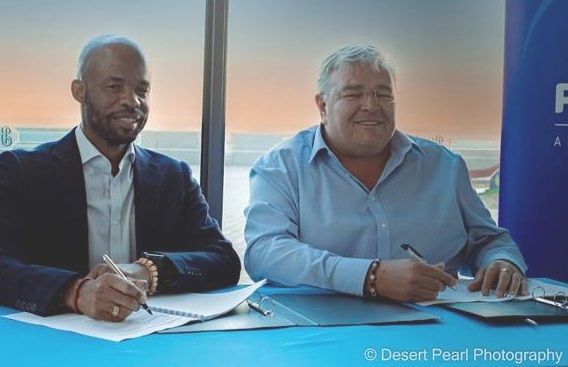
Telecom and Paratus announce major Public Private Collaboration to connect Namibia to Google’s new undersea cable

A significant Public Private Collaboration between Paratus Telecom and Telecom Namibia will fund the Namibian link to Google’s new undersea cable between South Africa and Portugal.
In mid-2019, Google announced that it is funding a global cable network with distinctive technological advantages at a cost of approximately US$47 billion. The new cable off the continent’s west coast, is part of this worldwide network. Paratus immediately approached Google with the request to link to the undersea cable with Paratus as the local operator. This required going through a protracted due diligence after which Google approved the Paratus submission.
In the meantime, Paratus started scouting for local partners to help carry the financial commitment to link Namibia to a node in the cable which was included since the initial design. This is where Telecom entered the picture leading to one of the most significant and tangible Public Private Collaborations to date. Another group that showed a keen interest to be involved in the project is Demshi Investment Holding who came on board as a private licensed operator investing in additional capacity.
Paratus Group Chief Executive, Barney Harmse said at the signing of the agreement on Tuesday evening that this new venture is yet another major milestone in his company’s rapid and aggressive investment in infrastructure.
The new Telecom Chief Executive, Dr Stanley Shanapinda underscored the importance of collaboration on large projects, saying “This collaboration affirms that strategic partnerships between local network providers will greatly promote economic growth and digital transformation, while accelerating Namibia’s participation in the Fourth Industrial Revolution. We are very proud to be an investor in the Namibian branch.”
Named Equiano in honour of a Nigerian-born writer and abolitionist, Olaudah Equiano, the new cable is expected to be completed during 2022 with the Namibian landing station scheduled for this year. Once operational, it will provide Namibian networks and their customers greater capacity, enabling more product options to support economic growth and support a competitive telecommunications sector.
The two joint-venture partners are each making a significant investment to get Namibia connected to Equiano. This connection will give Namibia approximately 20 times more network capacity than the existing WACS cable.
After the signing of the agreement, Harmse commented :We are honoured to be co-investing with Telecom Namibia on the Equiano subsea cable project because this matches our goals of delivering unlimited connectivity and building Africa’s quality network with all the Internet capacity it needs.”
Through its extensive networking capacity to other countries in the Southern African Development Community, Paratus will now be able to offer broadband Internet connectivity in six southern African countries complemented by satellite connectivity to 22 other countries as well as points of presence in Europe and the United States.
“This is important for Namibia,” said Dr Shanapinda. “It is part of our ongoing commitment to connect the Namibian people with faster, more reliable Internet. We will experience, first-hand, the positive impact this increased capacity and redundancy will have on our country and our economy. We have numerous points of presence internationally and we will continue to enhance routing diversity between these points to minimise loss of traffic in the event of a failure on any of the submarine cables. It is crucial to highlight that Telecom Namibia does not only carry local traffic, but we ensure Internet connectivity for various landlocked countries in the SADC region.”
Telecom Namibia’s advanced international network provides direct connections from Namibia to more than 240 destinations around the world. In Namibia, Telecom has more than 13,000 km fibre optic cable at its disposal.
Dr Stanley Shanapinda (left), the Chief Executive of Telecom Namibia and Barney Harmse, Paratus Group’s Chief Executive, signing an agreement to connect Namibia to Google’s new undersea cable off Africa’s west coast.













































